#farming in india
Text
Why is Sulphur essential for oilseeds?
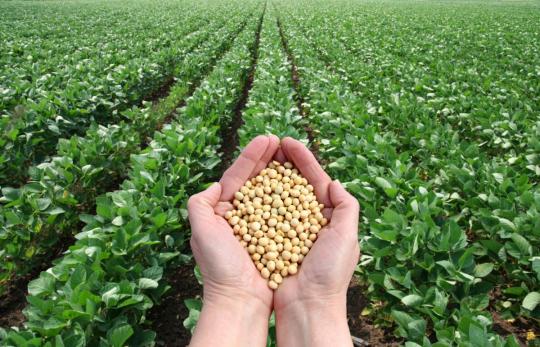
It in common is an essential nutrient, required for normal plant growth and development.
Crucial for oil synthesis.
Increases in the yield and test weight (gram) of oilseeds.
Sulfur deprivation can severely reduce production by up to 40%.
ಎಣ್ಣೆಕಾಳುಗಳಿಗೆ ಸಲ್ಫರ್ ಏಕೆ ಅತ್ಯಗತ್ಯ?
ಇದು ಅಗತ್ಯವಾದ ಪೋಷಕಾಂಶವಾಗಿದ್ದು, ಸಾಮಾನ್ಯ ಸಸ್ಯ ಬೆಳವಣಿಗೆಗೆ ಮತ್ತು ಅಭಿವೃದ್ಧಿ ಅಗತ್ಯವಾಗಿರುತ್ತದೆ.
ತೈಲ ಸಂಶ್ಲೇಷಣೆಯಲ್ಲಿ ನಿರ್ಣಾಯಕ ಕಾರ್ಯ ನಿರ್ವಹಿಸುತ್ತದೆ.
ಎಣ್ಣೆಬೀಜಗಳ ಇಳುವರಿ ಮತ್ತು ಪರೀಕ್ಷಾ ತೂಕ (ಗ್ರಾಂ) ಹೆಚ್ಚಿಸುತ್ತದೆ.
ಸಲ್ಫರ್ ಕೊರತೆಯು ಉತ್ಪಾದನೆಯನ್ನುತೀವ್ರವಾಗಿ 40% ರಷ್ಟು ಕಡಿಮೆ ಮಾಡುತ್ತದೆ.

#amrutparnavati#agriconsultancy#oilseeds#sulfur#plant nutrition#farming#agriculture#indianfarming#thought for the day#mudhol#bagalkot#karnataka#farming in india#india
0 notes
Photo

“Religious Beliefs In India Harmful,” Montreal Star. November 11, 1932. Page 5.
----
Should Be One of Richest Farming Countries in World
----
NEW YORK Nov 11 — (Star Special)— Although India should be one of the richest agricultural lands in the world, her religious customs and beliefs keep her near the bottom of the list. Dr. Sam Higginbottom, Presbyterian missionary at Allahabad, India, told 600 persons yesterday at a luncheon given in his honor by the presbytery of New York and the Sam Higginbottom Association.
Dr. Higginbottom, whose exploits and adventure sat Introducing new agricultural methods in the poorest farming districts in India are widely known in all church circles, returned do this country recently and will remain here until after Christmas.
‘When you stop to consider that It has been estimated that there are 60,000,000 Indians who are too poor to provide enough food to keep them fit. you can understand why I believe there is no better way for a Christian to help India than to help the farmers," ha said. "The casual onlooker In India knows little of Indla’a vast multitudes, most of whom are farmers, who use the same crude wooden ploughs that were used in Bible times and millions of whose cows do not give enough milk to pay their board."
Dr. Higginbottom admitted that the agricultural problem of India was overwhelming and was fraught with many complications, because of the sacredness with which all domesticated animals are regarded by the Indians. Thee are so many cows, ha said, that they are eating the people out of house and home.
The missionary has received much recognition from the British Government and is often consulted on farm problems. He was awarded the Kaiser-I-Hind medal for public service on India and is the only person who has been conferred with the degree of Doctor of Philanthropy from Princeton University.
[AL: Really awe-inspiring argument that blames the victims of British colonialism and can't arrive at any other analysis than ‘the religion I’m trying to eradicate in India is the thing keeping my potential converts in poverty’.]
#new york#christian missionaries#british india#blaming the victim#christian supremacy#british empire#christian philanthropy#charitable philanthropy#farming in india#poverty relief#british raj#applogies for empire#american missionaries#presbyterians#the great depression#hinduism
0 notes
Text
अपने पूरे जीवन में पहली बार खेती में हुई इतनी कम पैदावार, पढ़ें ऐसा क्यों कह रहे हैं किसान
अपने पूरे जीवन में पहली बार खेती में हुई इतनी कम पैदावार, पढ़ें ऐसा क्यों कह रहे हैं किसान
गौरतलब है कि सूखे और अधिक वर्षा जैसी परिस्थितियां एक दशक पहले बिल्कुल असमान्य बात थी. पर अब यह सामान्य हो चली है, अब किसानों को हर साल इससे जूझना पड़ रहा है.
गेहूं की खेती
Image Credit source: File Photo
देश में इस साल गेहूं की पैदावार में भारी कमी आई है, गेहूं और आटा के कीमतों में तेजी आई है. इस साल गर्मियों में मौसम में चलने वाले के लिए गर्म हवा के कारण गेहूं की फसल को काफी नुकसान पहुंता है.…
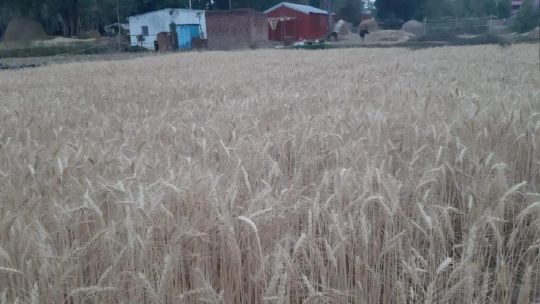
View On WordPress
0 notes
Text
A new study launched this week highlights the work of Andhra Pradesh Community-Managed Natural Farming (APCNF) and the remarkable untapped potential of agroecological natural farming in Andhra Pradesh, India.
Spanning over 6 million hectares, and involving 6 million farmers and 50 million consumers, the APCNF represents the largest agroecological transition in the world. Amidst the diverse landscapes of Andhra Pradesh, this state-wide movement is addressing a multitude of development challenges—rural livelihoods, access to nutritious food, biodiversity loss, climate change, water scarcity, and pollution—and their work is redefining the way we approach food systems.
Farmers practicing agroecology have witnessed remarkable yield increases. Conventional wisdom suggests that chemical-intensive farming is necessary to maintain high yields. But this study shows agroecological methods were just as productive, if not more so: natural inputs have achieved equal or higher yields compared to the other farming systems—on average, these farms saw an 11% increase in yields—while maintaining higher crop diversity. This significant finding challenges the notion that harmful chemicals are indispensable for meeting the demands of a growing population.
The advantages of transitioning to natural farming in Andhra Pradesh have gone beyond just yields. Farmers who used agroecological approaches received higher incomes as well, while villages that used natural farming had higher employment rates. Thanks to greater crop diversity in their farming practice, farmers using agroecology had greater dietary diversity in their households than conventional farmers. The number of ‘sick days’ needed by farmers using natural farming was also significantly lower than those working on chemically-intensive farms. Another important finding was the significant increase in social ‘capital’: community cohesion was higher in natural farming villages, and knowledge sharing had greatly increased—significantly aided by women. The implications for these findings are significant: community-managed natural farming can support not just food security goals, but also sustainable economic development and human development.
The study overall sheds light on a promising and optimistic path toward addressing geopolitical and climate impacts, underlining the critical significance of food sovereignty and access to nourishing, wholesome food for communities. Contrary to the misconception that relentlessly increasing food production is the sole solution to cater to a growing population, the truth reveals a different story.
While striving for higher yields remains important, the root cause of hunger worldwide does not lie in scarcity, as farmers already produce more than enough to address it. Instead, food insecurity is primarily driven by factors such as poverty, lack of democracy, poor distribution, a lack of post-harvest handling, waste, and unequal access to resources.
153 notes
·
View notes
Text
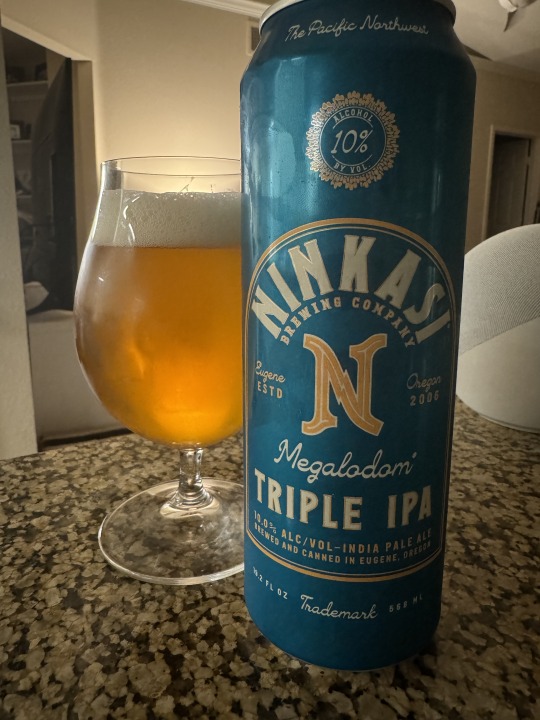
Ninkasi Megalodom Triple IPA (Picked up at Windmill Farms). A 3 of 4. Yep, this is a 10% IPA. Mostly tropical fruit and a touch of pine on the nose, and the body is quite bold on the bitterness front, and the alcohol is noticeably present. This is not unexpected, but it's definitely on the bitter side in terms of balance -- there is some malty sweetness to balance, but it's not enough.
14 notes
·
View notes
Link

“Until as recently as 1970, India was a land with more than 100,000 distinct varieties of rice. Across a diversity of landscapes, soils, and climates, native rice varieties, also called “landraces,” were cultivated by local farmers. And these varieties sprouted rice diversity in hue, aroma, texture, and taste.
But what sets some landraces in a class of their own—monumentally ahead of commercial rice varieties—is their nutrition profiles. This has been proved by the research of Debal Deb, a farmer and agrarian scientist whose studies have been published in numerous peer-reviewed journals and books.
In the mid-1960s, with backing from the U.S. government, India’s agricultural policy introduced fertilizers, pesticides, irrigation facilities, and high-yielding varieties of crops under the moniker of a “Green Revolution” to combat hunger. Instead, it began an epidemic of monocultures and ecological destruction.
In the early 1990s, after realizing that more than 90% of India’s native rice varieties had been replaced by a handful of high-yielding varieties through the Green Revolution, Deb began conserving indigenous varieties of rice. Today, on a modest 1.7-acre farm in Odisha, India, Deb cultivates and shares 1,485 of the 6,000 unique landraces estimated to remain in India.
Deb and collaborators have quantified the vitamin, protein, and mineral content in more than 500 of India’s landraces for the first time, in the lab he founded in 2014, Basudha Laboratory for Conservation. In one extraordinary discovery, the team documented 12 native varieties of rice that contain the fatty acids required for brain development in infants.
“These varieties provide the essential fatty acids and omega-3 fatty acids that are found in mother’s milk but lacking in any formula foods,” Deb says. “So instead of feeding formula foods to undernourished infants, these rice varieties can offer a far more nutritious option...”
Deb’s conservation efforts are not to preserve a record of the past, but to help India revive resilient food systems and crop varieties. His vision is to enable present and future agriculturists to better adapt to climate change...
Deb conserves scores of climate-resilient varieties of rice originally sourced from Indigenous farmers, including 16 drought-tolerant varieties, 20 flood-tolerant varieties, 18 salt-tolerant varieties, and three submergence-tolerant varieties. He shares his varieties freely with hundreds of small farmers for further cultivation, especially those farming in regions prone to these kinds of climate-related calamities. In 2022 alone, Deb has shared his saved seed varieties with more than 1,300 small farmers through direct and indirect seed distribution arrangements in several states of India.
One of these farmers is Shamika Mone. Mone received 24 traditional rice varieties from Deb on behalf of Kerala Organic Farmers Association, along with training on maintaining the purity of the seeds. Now these farmers have expanded their collection, working with other organic farming collectives in the state of Kerala to grow around 250 landraces at two farm sites. While they cultivate most of their varieties for small-scale use and conservation, they also cultivate a few traditional rice varieties for wider production, which yield an average of 1.2 tons per acre compared with the 1 ton per acre of hybrid varieties.
“But that’s only in terms of yield,” Mone says. “We mostly grow these for their nutritional benefits, like higher iron and zinc content, antioxidants, and other trace elements. Some varieties are good for lactating mothers, while some are good for diabetic patients. There are many health benefits.”
These native varieties have proven beneficial in the face of climate change too.
With poor rains in 2016, for example, the traditional folk rice variety Kuruva that Mone had planted turned out to be drought-tolerant and pest-resistant. And in 2018, due to the heavy rains and floods, she lost all crops but one: a folk rice variety called Raktashali that survived underwater for two days.
“They have proven to be lifesavers for us,” Mone says.” -via Yes! Magazine, 12/14/22
#india#rice#indigenous knowledge#farming#agriculture#climate change#climate resilience#sustainable agriculture#traditional knowledge#drought resistance#nutrition#good news#hope
204 notes
·
View notes
Text
youtube
Permaculture instructor Andrew Millison journeys to India to film the epic work of the Paani Foundation’s Water Cup Competition and Farmer's Cup Competition. We tour the village of Pemgiri, in Maharashtra, who competed in the 2019 competition to install the most amount of water harvesting structures in a 45 day period, and competed had farmer's groups compete in the Farmers Cup Competition in 2023. Guided by Paani Foundation’s chief advisor, Dr. Avinash Pol, we visit the work and see the effects of a watershed-scale groundwater restoration project that has dramatically improved the lives, economy, ecology and stability of this village, and experience the feeling of deep stability that comes with a healthy and abundant landscape.
Paani Foundation:
https://www.paanifoundation.in/
Digital Map Animation:
https://www.pearlriverecodesign.com/
PERMACULTURE DESIGN COURSE LINK:
https://workspace.oregonstate.edu/cou...
Andrew Millison’s links:
https://www.andrewmillison.com/
https://permaculturedesign.oregonstat...
JOIN THIS CHANNEL to get access to uncut video content and live Q & A sessions:
/ @amillison
SIGN UP FOR MY FREE NEWSLETTER:
https://share.hsforms.com/1X79TznHYRC...
#Andrew Millison#solarpunk#permaculture#Paani Foundation#Water Cup Competition#Farmer's Cup Competition#india#Pemgiri#Maharashtra#water harvesting#rain water#watershed#water table#groundwater#water#organic farming#farming#agriculture#Avinash Pol#Youtube
39 notes
·
View notes
Text
youtube
Permaculture Instructor Andrew Millison travels to the village of Laporiyah in Rajasthan India to see the 45 year water harvesting and community development project spearheaded by waterman Laxman Singh. We spent 2 days touring the village with Laxman and his team, including well known academic Vishnu Sharma. Vishnu has specialized in the revitalization of Rajasthan during his long career and we were very lucky to have him as Laxman's interpreter. This village has experienced such an incredible transformation due to the work of the villagers, it is hard to express in one video.
8 notes
·
View notes
Photo
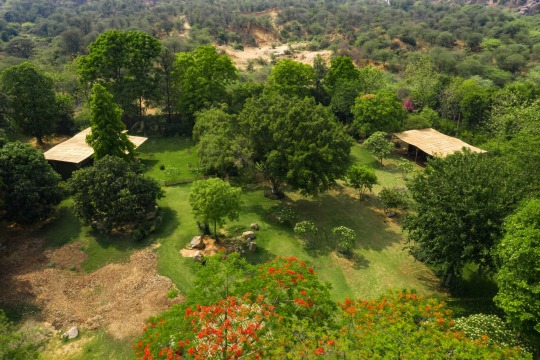









Gurugram farmhouse, Gurgaon, India,
Rakhee Shobhit Design Associates (RSDA),
Photographs: Noughts & Crosses
#art#design#architecture#interiors#farm#gurugram#farmhouse#gurgaon#india#container#shipping containers#RSDA#nature#sustainability#eco-friendly#minimal
139 notes
·
View notes
Text

3 notes
·
View notes
Text
got the train today and this lad sitting opposite me had never taken a train in the uk before so he asked me a couple questions and i showed him how to get the app up to track the route better and we wound up just kind of chatting the entire ride because it turned out he's a student in the same city as me and it was a bit awkward not just because we were complete strangers but because we were both struggling with each other's accents (he only moved from india a few months ago and his english wasn't completely fluent yet and i have an accent that is notoriously bad for foreign-speakers because it's v slang heavy and words/letters blend together and NOTHING gets enunciated so we were both going back and forth with it a bit) but we both just repeated/reworded things when necessary and we chatted for the entire hour and then afterwards he offered me his umbrella and to walk me home and i said no both bc i'd just met him and i didn't want him to get the wrong idea but still we both waved and laughed at each other bc of the rain when we went our seperate ways and yeah. it was just v nice
#he lived on a farm back in india and he was showing me pictures of the baby cows it was amazing#and i showed him pictures of the lambs we used to take care of#and yeah it was kind of awkward just bc of how often we were having to repeat ourselves/ask the other to repeat#but it was just nice that we were both like. trying? idk it was just a very honest human interaction#where yeah there were barriers to communication but we still wound up showing each other pics of baby animals lmao#and he was a first year at uni too and he said at one point that he's struggling with it bc it's hard to make friends#and generally it's quite lonely#and i was like OH I KNOW THIS SONG like that was my LIFE in first year#bc regrettably loneliness seems to be the universal first year emotion without added struggles like being alone in a foreign country#so i was just giving him advice and trying to reassure him and shit it was just very sweet#and he gave me a can of coke? LMAO slay#im glad it happened which is saying something bc i LOVE my train journeys i love listening to my music and zoning the fuck out#so when he started talking to me i was initially like can we NOT but the moment i stopped being a hardass and gave up on my music#it was actually really chill#hella goes to uni
36 notes
·
View notes
Text
तेजी से बढ़ रहा है बासमती चावल का एक्सपोर्ट, दो साल बाद शुरू हुआ सर्वे का भी काम
तेजी से बढ़ रहा है बासमती चावल का एक्सपोर्ट, दो साल बाद शुरू हुआ सर्वे का भी काम
भारत ने पिछले तीन वर्षों में 12 अरब डॉलर के बासमती चावल का निर्यात किया है. वर्ष 2021-22 में भारत से बासमती चावल के कुल निर्यात में सऊदी अरब, ईरान, इराक, यमन, यूएई, यूएस, यूके, कुवैत, कतर और ओमान की हिस्सेदारी करीब 80 प्रतिशत थी.
तेजी से बढ़ रहा है बासमती चावल का निर्यात
Image Credit source: TV9 (फाइल फोटो)
वाणिज्य मंत्रालय ने बताया कि चालू वित्त वर्ष की अप्रैल-जून तिमाही में बासमती चावल का…
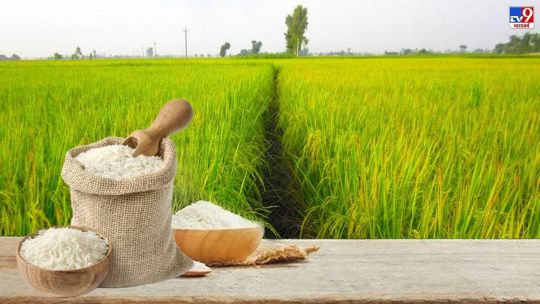
View On WordPress
0 notes
Text




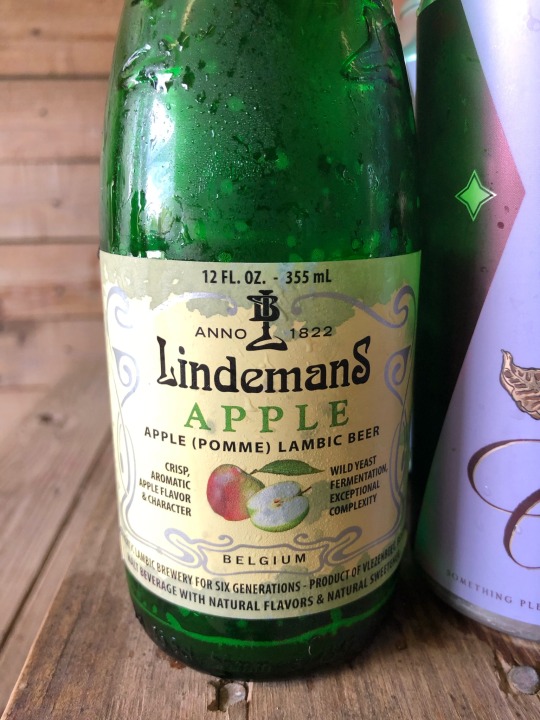

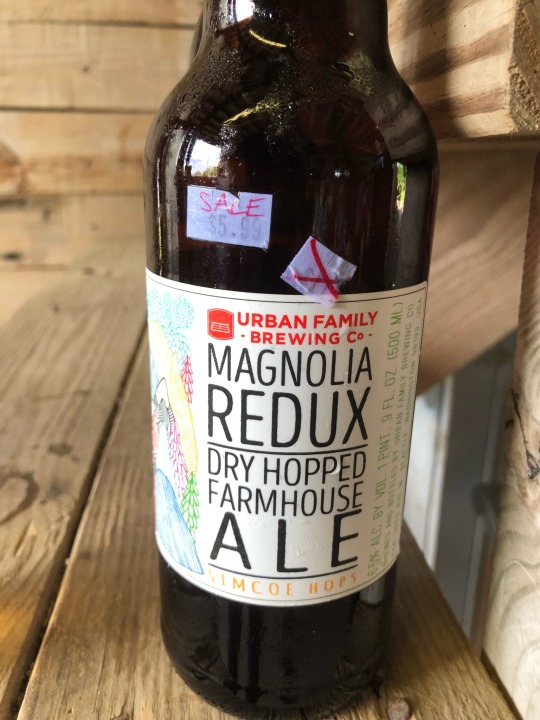
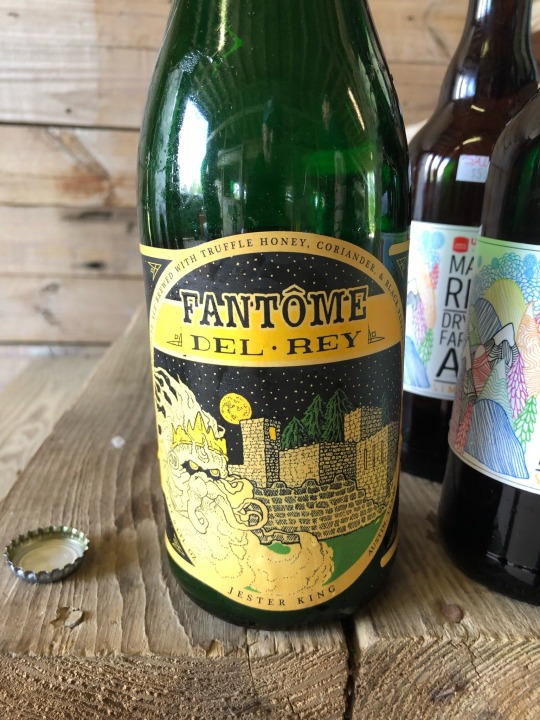


Farm House Ale Share at my barn last month!
#beer#drunk#craft beer#craftbeer#ipa#stout#ale#india pale ale#louisiana#imperial stout#saison#jester king#farmhouse#farmhouseale#farm house ale#barn
4 notes
·
View notes
Text
The standard legend of India’s Green Revolution centers on two propositions. First, India faced a food crisis, with farms mired in tradition and unable to feed an exploding population; and second, Borlaug’s wheat seeds led to record harvests from 1968 on, replacing import dependence with food self-sufficiency.
Recent research shows that both claims are false.
India was importing wheat in the 1960s because of policy decisions, not overpopulation. After the nation achieved independence in 1947, Prime Minister Jawaharlal Nehru prioritized developing heavy industry. U.S. advisers encouraged this strategy and offered to provide India with surplus grain, which India accepted as cheap food for urban workers.
Meanwhile, the government urged Indian farmers to grow nonfood export crops to earn foreign currency. They switched millions of acres from rice to jute production, and by the mid-1960s India was exporting agricultural products.
Borlaug’s miracle seeds were not inherently more productive than many Indian wheat varieties. Rather, they just responded more effectively to high doses of chemical fertilizer. But while India had abundant manure from its cows, it produced almost no chemical fertilizer. It had to start spending heavily to import and subsidize fertilizer.
India did see a wheat boom after 1967, but there is evidence that this expensive new input-intensive approach was not the main cause. Rather, the Indian government established a new policy of paying higher prices for wheat. Unsurprisingly, Indian farmers planted more wheat and less of other crops.
Once India’s 1965-67 drought ended and the Green Revolution began, wheat production sped up, while production trends in other crops like rice, maize and pulses slowed down. Net food grain production, which was much more crucial than wheat production alone, actually resumed at the same growth rate as before.
But grain production became more erratic, forcing India to resume importing food by the mid-1970s. India also became dramatically more dependent on chemical fertilizer.
According to data from Indian economic and agricultural organizations, on the eve of the Green Revolution in 1965, Indian farmers needed 17 pounds (8 kilograms) of fertilizer to grow an average ton of food. By 1980, it took 96 pounds (44 kilograms). So, India replaced imports of wheat, which were virtually free food aid, with imports of fossil fuel-based fertilizer, paid for with precious international currency.
Today, India remains the world’s second-highest fertilizer importer, spending US$17.3 billion in 2022. Perversely, Green Revolution boosters call this extreme and expensive dependence “self-sufficiency.”
106 notes
·
View notes
Text

Pure Project + Humble Sea Otter Romp Hazy Double IPA (Picked up at Windmill Farms). A 4 of 4. Incredibly different hop profile on this with nearly all lemon/lime and coconut, and then a slightly more traditional citrus and tropical profile in the body. Thick and hazy as expected, and has a soft feel on the palate.
#pure project#humble sea#otter romp#hazy double ipa#murky ipa#ipa#india pale ale#beer#windmill farms#san diego#4
13 notes
·
View notes
